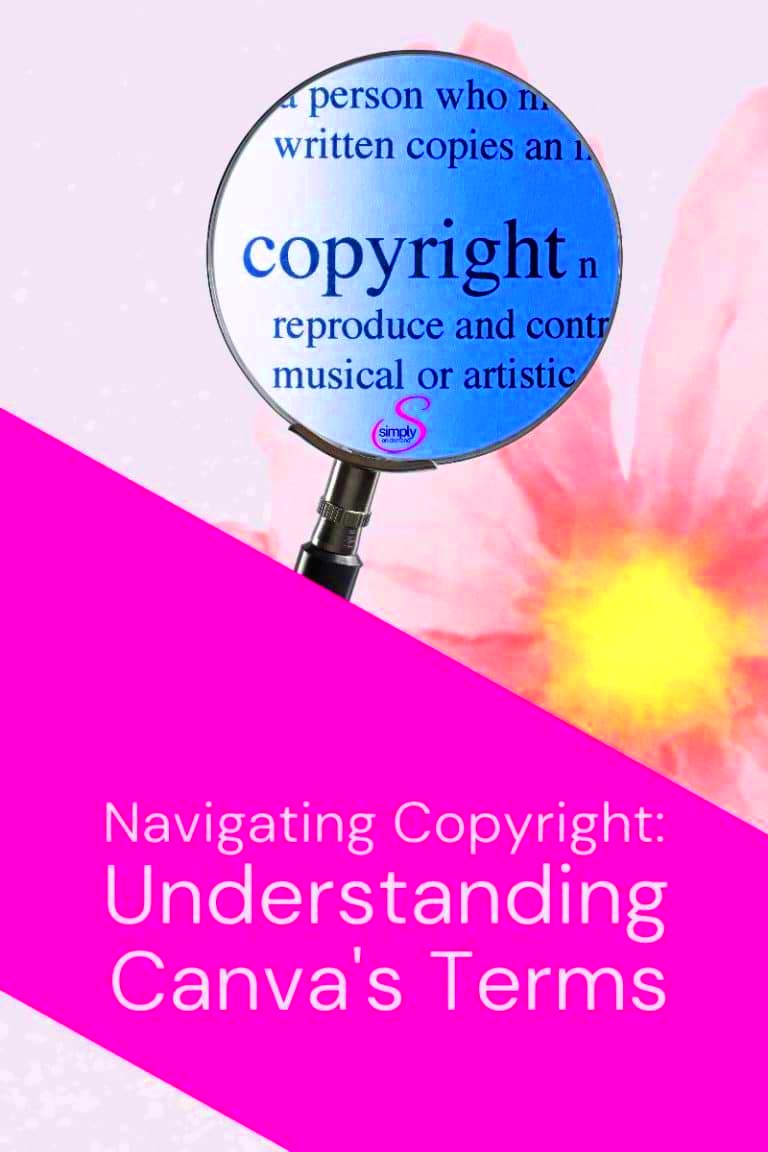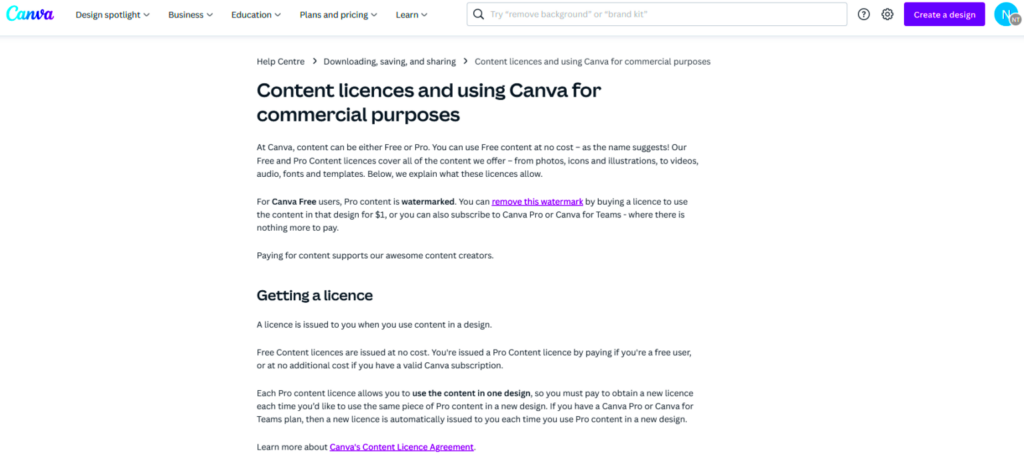Using Canva can be an enjoyable and creative endeavor; yet, it is crucial to pay attention to copyright complications. A lot of people don’t understand that not everything on Canva is free to use unconditionally. Knowing these rights will help you stay out of trouble with the law as well as ensuring that the original owners receive their due acknowledgment. This part will talk about some fundamental things regarding the issues of copyright when using Canva templates and assets.
Understanding Canva's Licensing Agreement

Canva has a plethora of templates for designs, images and other resources for people to use. However, understanding the licensing agreement of these means is important. And therefore, you need to consider this:
- Free Media: You can use free media for personal and commercial projects, but you cannot sell or redistribute them without modification.
- Pro Media: Pro users have access to premium assets. The licensing for these may vary, so always check the specifics.
- Third-Party Content: Be cautious with third-party content, as it may have different licensing rules.
Canva is getting more popular by the day, and this makes it possible for us to use it in different forms of media. However, have you ever thought about the legal aspects that surround its usage? Therefore, you should avoid getting into trouble with the law by reading and understanding the company’s terms of use.
Also Read This: How to Unblock Someone on Telegram
Types of Content and Copyright on Canva

Canva presents several forms of content; every type has distinct ramifications on copyright matters. Familiarity with them will assist you in maximizing your use of the platform:
- Templates: Templates are copyrighted works. You can customize them, but you can’t claim them as your own design without significant alteration.
- Images: The images you find on Canva come with specific licenses. Always check if you need to attribute the creator.
- Fonts: Fonts used in your designs are also subject to licensing. Be aware that some fonts may have restrictions on commercial use.
- Icons and Illustrations: Similar to images, these can be used under certain conditions. Make sure to follow any attribution requirements.
On the Canva design path that you take, one can avoid unintentional infringement by being aware of the different categories of contents together with their copyright status.
Also Read This: Boosting Your Earnings from Selling on Shutterstock
How to Properly Use Canva Templates
Canva templates can make your design work much faster, but it’s also important to use them the right way. To be sure that you are using templates in a proper manner, here are some tips:
- Customize Your Designs: While you can use a template as a starting point, it's best to customize it to make it unique. Change colors, fonts, and images to create something that reflects your brand.
- Avoid Unaltered Reselling: You cannot sell or redistribute a Canva template in its original form. Always modify it enough to create a distinct design.
- Check License Type: Different templates come with different licenses. Ensure you know whether it’s a free or paid template and what that means for your use.
- Read Usage Guidelines: Canva provides specific guidelines for using their templates. Familiarize yourself with these to avoid any misuse.
Legal restrictions and rights of original creators can be from time to time resolved by following appropriate measures while using Canva templates properly.
Also Read This: Uploading a Gallery from Lightroom to ShootProof: A Quick Guide
Attribution Requirements for Canva Assets
Utilising the tools in Canva necessitates applying attribution; it is very essential. While not every asset requires attribution, knowing when to give credit can save you from copyright issues. Here are necessary points you should understand:
- Free Assets: Many free images and graphics require attribution. Look for a small "attribution required" note next to the asset.
- Pro Assets: Typically, pro assets do not require attribution, but it’s always a good practice to check the licensing information just to be sure.
- How to Attribute: When attribution is required, include the creator's name and the source. You can add this information in a small text box within your design or in the description if you’re sharing it online.
- Using External Sources: If you incorporate assets from external sites, ensure you understand their attribution rules as well.
Citing properly is not only necessary for keeping you out of trouble but also assists the authors whose creations are being used.
Also Read This: Hacker Typer from AllColorScreen.com: Unleash Your Inner Movie Hacker
Common Copyright Mistakes to Avoid
Utilizing Canva without falling into the trap of infringement should be a priority. Below are a few typical errors people commit and ways to evade them:
- Ignoring Licensing Agreements: Failing to read and understand the licensing terms can lead to unintentional violations. Always take a moment to familiarize yourself with the rules.
- Using Templates Without Modification: Simply reusing a template without making significant changes can result in copyright claims. Make it your own!
- Assuming All Assets Are Free: Just because something is available on Canva doesn’t mean it’s free to use without restrictions. Always check if there are fees or attributions required.
- Disregarding Attribution: Forgetting to give credit where it’s due can lead to copyright issues. If attribution is required, make sure to include it in your design.
- Overlooking Third-Party Content: If you include content from outside Canva, verify the copyright status of that material. Always respect others' rights.
You can have a smooth and legally compliant experience on Canva for your creative projects if you are aware of these common mistakes.
Also Read This: Understanding the Differences Between Follow and Connect on LinkedIn
What to Do If You Violate Copyright
It can be very hard to face the truth that you might have unknowingly broken copyright laws but if such a thing happens, it is good to know what steps to take. You can do the following:
- Cease Use Immediately: Stop using the copyrighted material as soon as you realize the violation. This shows good faith and can help mitigate potential legal issues.
- Assess the Situation: Determine the extent of the violation. Did you use an image without permission? Did you modify a template too little? Understanding the issue will help in addressing it.
- Contact the Copyright Holder: If possible, reach out to the copyright holder. They may be willing to grant you permission or work out a solution.
- Remove the Content: If you posted the material online, remove it from your website or social media to prevent further exposure.
- Consult a Legal Expert: If you’re unsure how to proceed, it might be wise to consult a legal expert specializing in copyright law. They can provide guidance tailored to your situation.
In this way, you can manage copyright infringement wisely and lessen likely results.
Also Read This: Royal Rumble 2007 Winner Highlights and Key Moments
Best Practices for Copyright Compliance on Canva
It’s easier to comply with copyright laws when using Canva by following some best practices. Below are a few tips that you should keep in mind:
- Read the Terms of Use: Familiarize yourself with Canva's terms of service. Understanding the rules will help you avoid unintentional violations.
- Use Your Own Images: Whenever possible, use images you own or have created yourself. This way, you can avoid copyright issues altogether.
- Modify Templates: Customize Canva templates to ensure they reflect your unique style. This not only helps with copyright but also enhances your branding.
- Keep Records: Document the sources of any assets you use, including licenses and attribution requirements. This will serve as proof of compliance if needed.
- Stay Updated: Copyright laws can change, so stay informed about any updates to Canva’s policies or general copyright legislation.
Content creators’ rights must be respected while confidently navigating through Canva resources due to adoption of these best practices.
Also Read This: Earning from Behance
Frequently Asked Questions
Here are various frequently asked questions concerning copyright matters while utilizing Canva and their corresponding responses:
- Do I need to credit Canva when I use their templates? It depends on the specific asset. Free assets may require attribution, while pro assets typically do not.
- Can I use Canva templates for commercial purposes? Yes, but ensure you customize them and check the licensing agreement to confirm it allows for commercial use.
- What happens if I don't give proper attribution? Failing to provide required attribution can lead to copyright infringement claims, so always check the guidelines.
- Are there any penalties for copyright violations? Yes, copyright infringement can result in legal action, fines, or having to remove the content.
- How can I find out if an image requires attribution? Canva usually indicates this in the licensing information for the asset, so always check before using it.
If you want more inquiries do not be shy to contact us or check legal materials. Knowledge is power when it comes to maximizing your use of Canva.
Conclusion and Final Thoughts
To sum up, copyright concerns while utilizing canvas are very vital to the graphic designers or entrepreneurs. You have to know the licensing contracts, observe the best practices and think about attribution demands as a result of which you can make magnificent builds free from any legal problems. Protection is not for oneself only but also an assurance of other people’s creativity and labor. One is always supposed to stay updated, continuously skim through the policies of canva and remember that sharing creativity in a responsible way enhances its growth. Go on then, spray your inspirations using canva but remember about intellectual property law!
